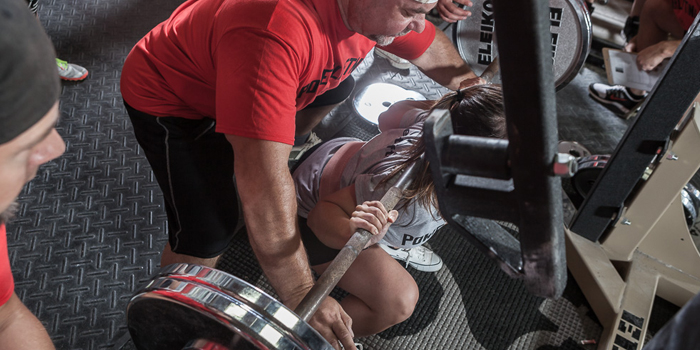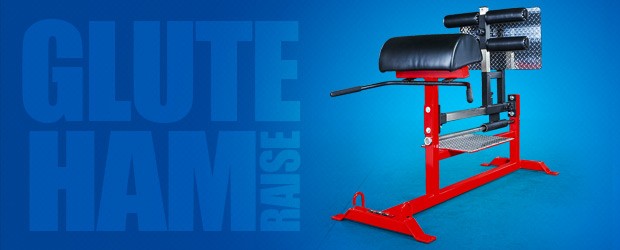
In this article I am going to share my top five posterior chain exercises and explain why they are my favorites. I will discuss the benefits and give some advice on how to implement each exercise in your training. I’m well aware that this list in not the be-all, end-all of exercises. However, I feel the exercises I will list will provide you with a great deal of return on investment. That being said, let’s get started.
The Barbell Row
The barbell row has been around for quite some time. The primary purpose of this exercise is to build up the lats. It was made popular in bodybuilding circles to add thickness and width to the back. This is just one benefit that they offer, from an aesthetic point of view. From a functional point of view, they help build up the lats for not only the support of the bench press but also for lowering and pressing the weight back up.
WATCH: The Hanging Hamstring Raise
A lot of times you will hear seasoned coaches or trainers say to “use your lats to press the bar” or “row the bar down then flex your lats as hard as possible.” Why are they saying this? Because there’s a point in the lift where, if you do this, the bar will begin to go back up. On top of this, the bigger or wider the lats are, the better your leverage is going to be. This means the lats can act as a springboard or cushion while the bar is in contact with the chest.
Another benefit to the bent-over row is its uncanny resemblance to the midpoint of the deadlift. At this point of the lift, the lifter has to put the load on the heels, hamstrings, and glutes — the same exact area that the deadlift loads at its midpoint. The same can be said for the bent-over row, except you must maintain this position throughout the entire exercise, which is why it’s a great exercise.
The 45-Degree Hyperextension
The 45-degree hyperextension is next. This exercise is great for building up the spinal erectors, which help in the stabilization of the low back while doing deadlifts and squats and help in maintaining a good arch while benching. The problem that I see most with people performing this movement is that they overdo the extension portion; they arch way too hard at the top. This compresses the facet joints and discs in the low spine. What you want to instruct the athlete or client to do is to flex the spinal erectors as hard as they can. Once they reach the 45-degree angle, they should travel no further than that. This exercise should be done as an accessory movement on your lower body days, with rep ranges between 12 and 15 reps. Loading is optional because some days after heavy squats or deadlifts, bodyweight can be enough.
The Glute Bridge
This is an exercise made famous by Bret Contreras. He has discussed it in great detail. The benefits are not only from an aesthetic viewpoint, either. I can attest to the benefit of the movement; it has helped my female clients learn how to hip hinge and therefore be able to “close the triangle” when deadlifting, and use their glutes more when squatting. Another benefit to this movement is that, when the glutes are strong, hip pain and pelvic stabilization are also improved.
The glute bridge can be performed with or without a load. However, for the most benefit, they should be performed with a load, be it bands, chains, or a bar. How you implement this within your programming will be determined solely on what your goal is. Since this is a powerlifting site and hypertrophy and power are the main goals here, the rep ranges should be between six and eight reps, performed with a weight that challenges you but doesn’t enter “void’’ territory. The glute bridge should also be used as an accessory movement on squat and deadlift days, and if you are really having issues with getting your glutes into the game, do them within your dynamic warm-up before you begin training.
The Glute Ham Raise
I wrote about the glute ham raise earlier this year in an article entitled Troubleshooting the GHR: Are You Performing Them Correctly? If you haven't read that article, I hope you are now. In light of that article, I am going to expand a bit on why it will benefit your squat, deadlift, and bench.
It all boils down to the execution of the glute ham raise. If you move too slowly on the concentric portion of the exercise, you teach the hamstrings and glutes to fire slowly, and this is exactly what they will do when you go to squat or deadlift. Every rep will turn into a grinder, and this is not what you want to happen. The other benefits are, once again, more pelvic and hip stabilization, and better knee health. This is because the hamstrings are also responsible for knee stability.
WATCH: Blast from the Past — How and Why to Use A GHR
Now, you’re probably wondering how having stronger hamstrings help with your bench. Well, let's look at a cue that is used when coaching the bench press. How many of you have heard that you need to use more leg drive? When you are lying on the bench and this cue is given, which muscles in the leg flex? The quads or the hamstrings? If you said the hamstrings you would be correct, because the quads are in a stretched position, while the hamstrings are in a flexed position. The power of the press comes from the muscles behind you, not in front of you. Perform this exercise on deadlift and squat days also within the accessory portion of your training. Loading for the exercise is usually performed with bands or chains. Reps ranges are done with a hypertrophy-endurance element, so usually between 12 and 20 repetitions.
The Reverse Hyper
This exercise was made famous by Louie Simmons of Westside Barbell. If you aren’t doing this movement then you are missing out on the best back-saving, PR-inducing, pelvic-stabilizing exercises out there. I have been lifting for 15 years and have always been able to do okay with my deadlifts and squats, but I always needed a belt after going above 500 pounds. Well, after using a crude version of this movement during one training session, I was able to do just that with no belt. After that day, I was convinced that the reverse hyper was the missing exercise within my programming. I have been doing it ever since.
Now, as far as the science goes, the reverse hyper forces you to use the hip-hinging motion, just in reverse. It also targets the glutes and spinal erectors, once again increasing the ability of the glutes to stabilize the pelvis and strengthen the spinal erectors. It is also great at relieving back pain, as a lot of my clients tell me that their back pain has improved or is non-existent now that we’ve begun implementing this exercise. This is best used as an accessory on leg days. However, if you really need improvement then you can perform this three days a week and overtrain the area. Just keep sets low and reps moderate, between 12 and 15.
Like I said earlier, this is not a comprehensive list of posterior chain exercises you can do. Everyone has different needs and will need to use these exercises and others in different ways, but these movements are a great way to start building your posterior chain more effectively. Start by focusing on these five and then you can experiment and add more in the future.
Charles Gardner has been training for over 15 years and has worked for Oakwood University, a major HBCU, for seven years as their weight room director and physical education professor. He has a Bachelors of Science, is certified as a strength coach through the ISSA, and is currently seeking his Masters in Exercise Science. He was recently added to The Marquis Who's Who list for 2023-24.










1 Comment